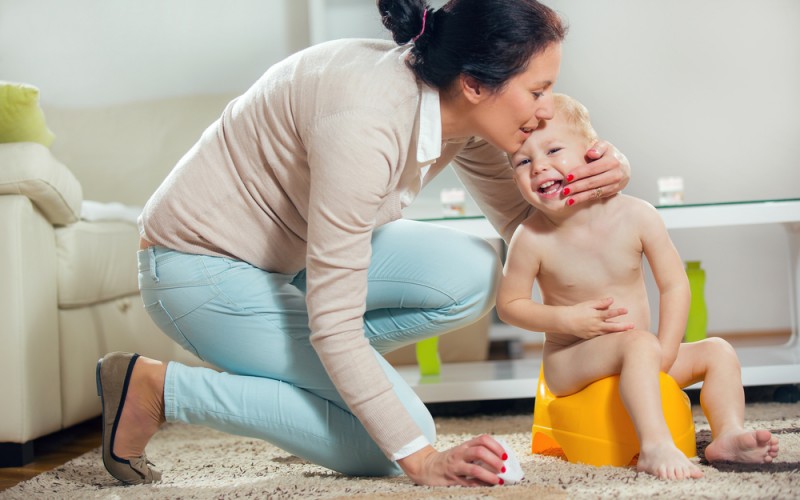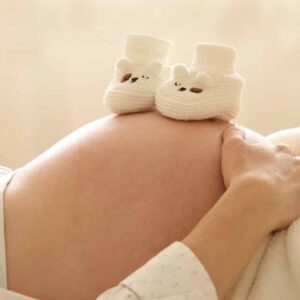Easy Parental Guides for Potty Training Your Child

Potty training is never easy, so when you successfully cross this milestone, you know it\’s a big deal. Many children are not ready for potty training before 2 years. While some can use the potty before 2, others wait till they are 3 years. Timing is essential when you are considering potty training for your child; if you start too early, the process will take longer. Before you begin the potty training process, watch out for signs of readiness in your child.
What is potty training?
Toilet training or potty training is the ability of a child to anticipate the need to urinate or defecate. It\’s a training whereby a child learns or gains independence and self-mastery of his body when he wants to use the toilet, whether asleep or awake. It takes a lot of training and encouragement to get your child to use the potty correctly; this is because it\’s a significant milestone in your child\’s life, which might take a little while before he masters to use the potty correctly.
How to know your child is ready for potty training
- Does your child sit, stand, and walk on his own?
- Can he sit on the toilet seat or potty by himself?
- Can he pull down his pants or shorts by himself?
- Does your baby communicate how he feels already?
- Would he be willing to follow instructions?
- Does your child stay dry for a longer period?
- Would he be interested in using a potty or toilet?
When you have answered the questions above, then you know if your child is ready to start the potty training. You also have to be prepared because the process of potty training isn\’t an easy task. Remember, the goal is to make the process of toilet training as positive and natural as possible. Patience is also required for successful toilet training.
Tips on potty training your child
Tell your child at least three days ahead about the potty training. Tell him why you want him to start the potty training and let him know he would be stopping the use of diapers during the day.
- Decide which words you want to teach your child to use when he wants to ease himself. Words such as \”poop,\” \”poo,\” \”wee\” are suitable for your child to use.
- Get your potty ready. Get a potty that will attract your child to use and place it in an easily reachable position. You can set the potty in the toilet or bathroom but ensure it is kept clean and dry.
- Show the potty to your child. Let him know that is what he will use to wee and poop and teach him to let you know when he needs his potty by using those words.
- Switch from wearing diapers to underwear for him.
- Pay attention to your child for signs that he wants to ease himself. When you notice he wants to relieve himself, take him to his potty in time. The first day may not go well, and he may refuse to sit on the potty but be patient with you and your child. You both will get the hang of it.
- You might want to schedule the potty breaks. Every two or three hours, you take your child to sit on his potty when he wakes in the morning and after every nap, hopefully by the end of the third day he gets fully used to his potty.
- Teach girls to wipe from front to back.
Mistakes to avoid when potty training
- Do not start too early. You should go at your baby\’s pace
- Using negative words to refer to body waste. Words like dirty, stinky or irritating are not ideal for your baby\’s potty vocabulary
- Giving rewards or prizes for every potty time.
- Being unrealistic – Start by unthinking that girls are more easier to teach or learn faster than boys! Be reasonable with your expectations, and don\’t use timelines. If they train fast and learn, lucky you but don\’t have in mind that your child must learn to potty in 2 weeks. Also, you\’re not failing to do the right because your toddler doesn\’t fall in line.
- Ignoring personality – Remember that a child\’s disposition incredibly influences the whole potty training experience. There are different types of characters in children;
- (Confident Type) These types of children might thrive on being given challenges or dares, e.g., let\’s see if you can pull your pants by yourself.
- (Introspective Type) These types of children benefit from frequent praise and encouragement and are sensitive to any displeasure from you. Be careful with your facial expression when they mess up and try to go easy on them.
- (Sanguine or Cheerful Type) These types of children play from one thing to another and do not take potty sessions seriously unless you make it super fun for them.
- (Phlegmatic Type) These types of children may not get involved much or won\’t see what the big rush is; they need more motivation than others.
Potty training is most efficient when you are consistent. It is best to set some days aside for you and your baby, where you are at home all through that period to establish your potty training.







